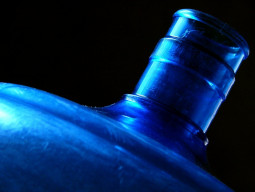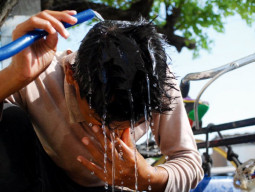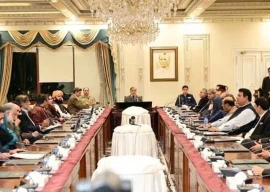
The highest temperature in the country on Sunday was recorded in Larkana, at 51C. Prior to this, the highest temperature was recorded in Mohen jo Daro at 53.3 C on May 26, 2010, the fourth highest temperature ever recorded globally, according to Director MET Dr Muhammad Hanif. The good news? You can expect better dates for the rest of this year due to this heat. “I am very happy with the present heat, it’s very beneficial for my date palms,” said grower Haji Abdul Jalil from Khairpur. “The long spell of comparatively cold weather was worrisome as the dates were not growing. But now, they’ll be a good size and we’ll get a good yield.”
While mango and date farmers welcomed the heat, vegetable crops in upper Sindh have been badly affected. “The heat has especially damaged the tomato crop, which is now being sold for Rs40 per kg, up from Rs10, and watermelons have become overripe,” said General Secretary Sindh Abadgar Board Kashmore chapter Ghulam Mohammad Khoso.
Is this a ‘heat wave’?
The mercury in Karachi touched 42 degrees on Sunday – the highest temperature of the summer season in the city this year, a spike from 34 to 35 degrees over the past few weeks, and 7 degrees higher than the temperature in June last year, according to the Meteorological department.
However, in Lahore, the maximum recorded temperature on Sunday was 46 degrees, just two degrees shy of Lahore’s highest temperature ever recorded on June 10, 2007, at 48 C, according to Director MET Dr Muhammad Hanif. However, the Met office says the current weather in Punjab is not a ‘heat wave’ and the weather is ‘normal’ for this region. “Temperatures started increasing quite late this year and right now it’s not near record breaking,” said Met Office Director Mian Amjad Shad. He said the heat will persist for five or six days.
Similarly, the weather in the twin cities of Islamabad and Rawalpindi is ‘normal’ for this time of the year, at 39 to 41 degrees, according to the Met office. And in Balochistan, Regional Director Met Office Saifullah Shami said the weather is only ‘slightly different’ from last year, with a heat wave in Sibi, Nokundi and Gwadar.
Meanwhile in Hyderabad, temperatures touched the seasonal peak of 47 degrees on Friday and 46 degrees on Sunday but officials said the weather was comparatively the same in June last year. “The hot weather is likely to continue for three to four days,” said Met official Khalid Qazi. A maximum temperature of 46 degrees has been forecast in Hyderabad on Monday.
Chief Meteorologist Pakistan Meteorological Department Dr Ghulam Rasool predicts the monsoon season this year will commence in the first half of July and, due to global climate change, will not follow the pattern of continuous rainfall as experienced before, but will instead be intermittent. Moreover, Balochistan is also expected to experience a monsoon this year, particularly in Harnai, Zhob and Sibi districts. “The last time we had such weather indicators was in 1997-1998,” said Rasool. Rain is expected at isolated places in Malakand, Hazara divisions, Kashmir and Gilgit-Baltistan over the next 24 hours, as well as light rain associated with gusty winds in parts of lower Sindh.
Heat-related illnesses
The exposure to intense heat has resulted in an influx of patients with gastroenteritis and heat-related diseases in hospitals in the twin cities, with doctors saying there has been a 20 per cent increase in cases as compared to the average last year, with around 200 patients admitted to Rawalpindi’s Holy Family Hospital, Benazir Bhutto Hospital and District Headquarters Hospital. Additionally, doctors at Quetta’s Bolan Medical Hospital and Teaching Complex reported a rising number of gastroenteritis cases. Provincial Coordinator Disease Early Warning System World Health Organization Dr Dawood Riaz said cases of heatstroke had been reported in Nasirabad and Turbat while gastroenteritis cases were reported in Gwader, Panjgur, Sibi and Turbat.
Civil Hospital Sukkur Medical Superintendent Dr Jawaid Shaikh said the number of patients arriving at the hospital with high fever, sunstroke, dehydration and gastroenteritis is steadily rising. He advised people to cover their heads when outside and drink plenty of water, preferably with a dash of salt or ORS. He discouraged the consumption of food or drinks from street vendors, particularly kulfi, gola gunda, watermelons and sugarcane juice. Patients are presenting with Hepatitis A and E as well as gastroenteritis after consuming unclean drinks or stale food, according to Dr Sohaib Zaidi, a consultant at Lahore’s Mayo Hospital.
Peshawar’s Lady Reading Hospital received a number of patients suffering from dizziness, dehydration and low blood pressure through the week. “We have special arrangements in place such as drips or snow baths and we’re dealing with an average of 25 patients a day at the LRH,” said Medical Officer Dr Sohail Khattak.
Published in The Express Tribune, June 9th, 2014.






















1714478350-0/ojwilson-(4)1714478350-0-270x192.webp)













-(1)1714378140-0/AliAminMaryam-(4)-(1)1714378140-0-270x192.webp)

1714370039-0/ojwilson-(1)1714370039-0-270x192.webp)







COMMENTS
Comments are moderated and generally will be posted if they are on-topic and not abusive.
For more information, please see our Comments FAQ